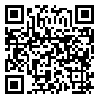

 , Hassan Morovvati
, Hassan Morovvati 

 , Zohreh Kavyani Yekta *
, Zohreh Kavyani Yekta * 

 , Kamand Fattahi
, Kamand Fattahi 

 , Bahador Hajimohammadi
, Bahador Hajimohammadi 

 , Afshin Akhondzadeh Basti
, Afshin Akhondzadeh Basti 

 , Raziyeh Barzegar Bafrooei
, Raziyeh Barzegar Bafrooei 


Introduction: Nowadays, consumption of meat and meat products have increased throughout the world. Regarding the economic values of meat, unauthorized tissues can be used in producing meat products. This study was conducted to detect unauthorized tissues in raw and processed meat products.
Methods: Samples of Kabab loghme (70% meat) and kielbasa (30% and 90 % meat), each containing 5, 10, 15, and 20% of chicken skin and bone were prepared. Then, each sample was divided into three parts. One piece was taken from each part and fixed in 10% neutral-buffered formalin. The samples were routinely processed for light microscopy and embedded in paraffin. The paraffin-embedded blocks were cut into 6 μm sections and stained using hematoxylin and eosin (H&E) for histological study.
Results: The histological examination revealed the chicken skin and bone tissues clearly in all the samples. The histometrical analysis indicated that the estimated percentages of the additive bone, especially in kabab loghme, were not significantly different from the real percentages. However, the skin tissue was difficult to estimate, especially in Kielbasa.
Conclusion: The findings of the present research suggest the histological technique as an effective method for quantitative evaluations of raw and processed meat products. However, the quantitative evaluation of additive tissues in raw meat products was more convenience than the processed products. In addition, estimation of bone additive was more applicable in comparison with skin tissue due to its resistance to histological processing preparations.
Received: 2017/05/31 | Accepted: 2017/06/25 | Published: 2019/07/15
| Rights and permissions | |
 |
This work is licensed under a Creative Commons Attribution-NonCommercial 4.0 International License. |

